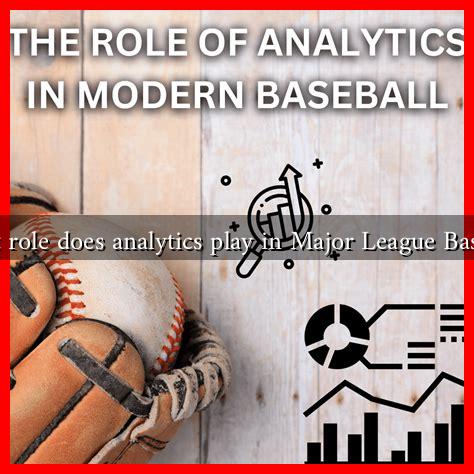-
Table of Contents
What Role Does Analytics Play in Major League Baseball?
In recent years, analytics has transformed the landscape of Major League Baseball (MLB), reshaping how teams evaluate players, strategize games, and engage with fans. The integration of data-driven decision-making has not only enhanced team performance but has also revolutionized the way the game is played and understood. This article delves into the multifaceted role of analytics in MLB, exploring its applications, benefits, and future implications.
The Evolution of Analytics in Baseball
Analytics in baseball is not a new concept; however, its significance has surged in the 21st century. The advent of advanced statistics and technology has allowed teams to gather and analyze vast amounts of data. The 2003 publication of “Moneyball” by Michael Lewis highlighted the Oakland Athletics’ use of sabermetrics to build a competitive team on a limited budget, sparking widespread interest in analytics across the league.
Key Areas of Analytics Application
Analytics in MLB can be categorized into several key areas:
- Player Evaluation: Teams utilize advanced metrics such as Wins Above Replacement (WAR), On-Base Plus Slugging (OPS), and Fielding Independent Pitching (FIP) to assess player performance more accurately than traditional statistics.
- In-Game Strategy: Data analytics informs decisions on pitching changes, defensive alignments, and batting orders.
. For instance, the shift in defensive positioning based on a batter’s hitting tendencies has become commonplace.
- Injury Prevention: Teams analyze player health data to predict and prevent injuries. Wearable technology and biomechanical analysis help in monitoring player fatigue and physical condition.
- Fan Engagement: Analytics also plays a role in enhancing the fan experience through personalized content, ticket pricing strategies, and targeted marketing campaigns.
Case Studies: Successful Implementation of Analytics
Several MLB teams have successfully integrated analytics into their operations, leading to notable achievements:
- Houston Astros: The Astros utilized analytics to build a championship-caliber team, focusing on player development and data-driven scouting. Their 2017 World Series victory is often attributed to their innovative use of technology and analytics.
- Los Angeles Dodgers: The Dodgers have embraced analytics in their pitching strategy, employing data to optimize pitcher usage and matchups. This approach has contributed to their consistent playoff appearances in recent years.
- Tampa Bay Rays: The Rays are known for their budget-conscious approach, relying heavily on analytics to identify undervalued players and maximize their roster’s potential. Their success in the competitive AL East is a testament to their analytical prowess.
Statistics: The Impact of Analytics
The impact of analytics on MLB is quantifiable. According to a study by the Sports Business Journal, teams that heavily invest in analytics have seen a significant increase in their win percentages. For example:
- Teams that adopted advanced metrics saw an average increase of 5-10 wins per season.
- Pitchers who utilized data-driven insights improved their strikeout rates by approximately 15%.
The Future of Analytics in MLB
As technology continues to evolve, the role of analytics in MLB is expected to expand further. Innovations such as artificial intelligence and machine learning are poised to enhance predictive modeling and player performance analysis. Additionally, the integration of virtual reality (VR) for training and simulation purposes is on the horizon, offering new avenues for player development.
Conclusion
Analytics has become an indispensable part of Major League Baseball, influencing every aspect of the game from player evaluation to fan engagement. The successful implementation of data-driven strategies by teams like the Houston Astros and Los Angeles Dodgers underscores the importance of analytics in achieving competitive advantage. As technology continues to advance, the future of baseball will likely be shaped by even more sophisticated analytical tools, ensuring that the game remains dynamic and engaging for players and fans alike.
For further reading on the impact of analytics in sports, you can explore resources like Sports Business Journal and Baseball Prospectus.





